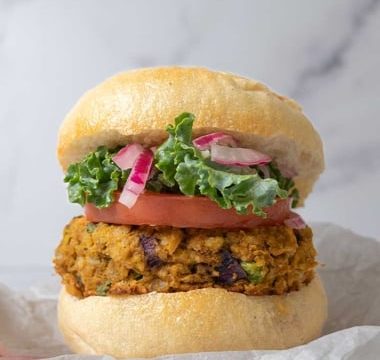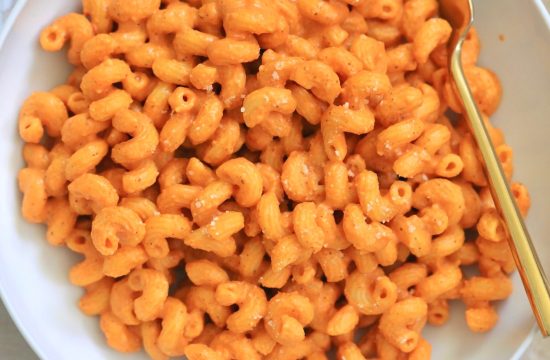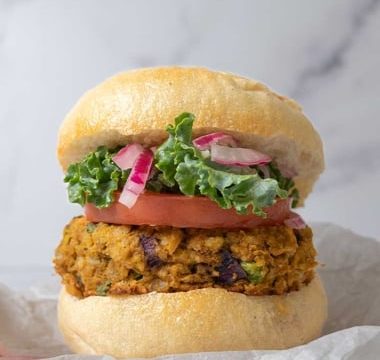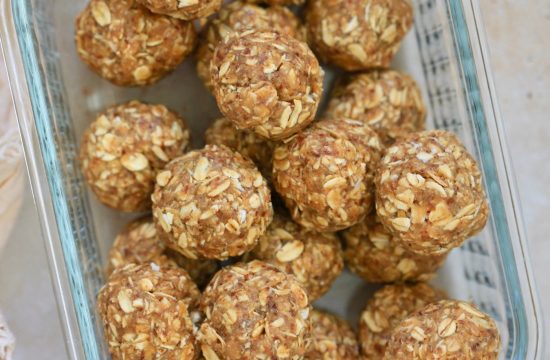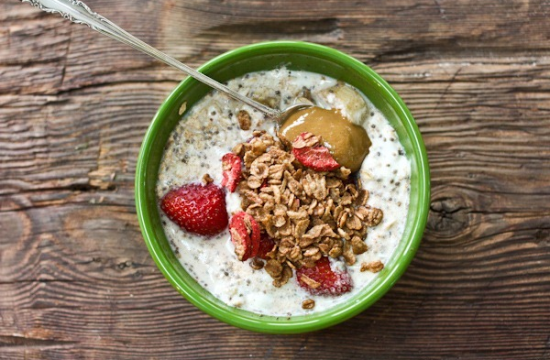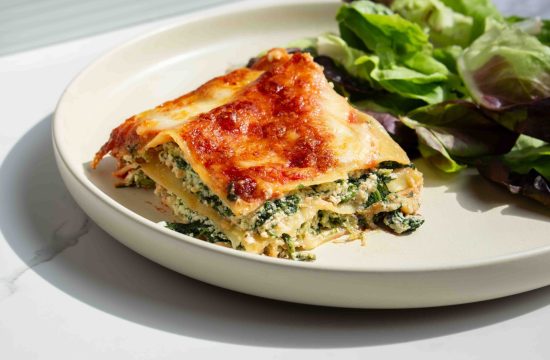The 16th chapter of Nidanasthanam of Ashtanga Hridayam is named as Vatasonita Nidanam Adhyayah. This chapter deals with the explanation of ‘diagnosis of gout’.
The topics covered in this chapter include –
– Nidana of Vatasonita – causes of gout
– Purvarupa – premonitory symptoms
– Rupa – clinical features
– Types of Vatasonita based on doshas and their symptoms
– Sadhyasadhyata (prognosis)
– Avarana Vata Nidanam
– Causes and symptoms of aggravation of Prana Vat
– Causes and symptoms of aggravation of Udana Vata
– Causes and symptoms of aggravation of Vyana Vata
– Causes and symptoms of aggravation of Samana Vata
– Causes and symptoms of aggravation of Apana Vata
– Sama-Nirama Vata (vata associated and dissociated with ama)
– Context of Avarana
– Pitta avrita vata – Vata enveloped / blocked by Pitta
– Kaphavrita Vata – Vata enveloped / blocked by kapha Dhatu dvara Avarana – obstruction by tissues
– Vata obstructed by Rakta (blood)
– Mamsavrita Vata – Vata obstructed by muscle
– Medovrita Vata – Vata obstructed by fat
– Asthyavrita Vata – Vata obstructed by bone
– Majjaavrita Vata – Vata obstructed by bone marrow
– Shukravrita Vata – Vata obstructed by semen
– Annavrita Vata – Vata obstructed by food
– Malavrita Vata – Vata obstructed by excreta
– Sarvadhatu avrita Vata – Vata obstructed by all tissues|
– Pittavarana – obstruction of vata by pitta subtypes
– Kaphavarana – obstruction of vata by kapha subtypes
– Sum up of 22 kinds of avarana (obstruction of vata)
– Anyonya Avarana (mutual obstruction of vata subtypes)
– Anyonya Avarana (mutual obstruction of vata subtypes)
– Summary of different kinds of avarana (obstruction)
– Importance of Prana and Udana Vayu
– Known and unknown avaranas
Pledge by the author(s)
अथातो वातशोणितनिदानं व्याख्यास्याम ।
इति ह स्माहुरात्रेयादयो महर्षय: ।
After having offered prayers to the God, henceforth we are going to explain the chapter pertaining to the explanation of ‘diagnosis of gout’. Thus say (pledge) atreya and other sages.
Nidana of Vatasonita: Causes of gout
विदाह्यन्नं विरुद्धं च तत्तच्चासृक्प्रदूषणम् ।
भजतां विधिहीनं च स्वप्नजागरमैथुनम् ॥ १ ॥
प्रायेण सुकुमाराणामचङ्क्रमणशीलिनाम् ।
अभिघातादशुद्धेश्च नृणामसृजि दूषिते ॥ २ ॥
वातलैः शीतलैर्वायुर्वृद्धः क्रुद्धो विमार्गगः ।
तादृशैवासृजा रुद्धः प्राक्तदेव प्रदूषयेत् ॥ ३ ॥
आढ्यरोगं खुडं वातबलासं वातशोणितम् ।
तदाहुर्नामभिस्तच्च पूर्वं पादौ प्रधावति ॥ ४ ॥
विशेषाद्यानयानाद्यैः प्रलम्बौ
Partaking of foods which cause burning sensation during digestion, which are incompatible; which cause vitiation of blood, indulgence in sleep, keeping awake without sleep and sexual intercourse in improper ways, probably in delicate people and those who do not have walking habit, due to trauma, not resorting to purificatory therapies, contamination of blood due to exposure to cold breeze; vata gets increased. Vata is aggravated and moves in abnormal paths, being obstructed –in its normal direction by the aggravated blood, vitiates the blood first and gives rise to the disease called by names such as Adhyaroga, khuda, vatabalasa and Vatasonita- vatarakta. It first affects the legs especially of those who keep them hanging when riding on animals etc.
Purvarupa: Premonitory symptoms
तस्य लक्षणम् ।
भविष्यतः कुष्ठसमं तथा सादः श्लथाङ्गता ॥ ५ ॥
जानुजङ्घोरुकट्यंसहस्तपादाङ्गसन्धिषु ।
कण्डूस्फुरणनिस्तोदभेदगौरवसुप्तताः ॥ ६ ॥
भूत्वा भूत्वा प्रणश्यन्ति मुहुराविर्भवन्ति च ।
Its premonitory symptoms are similar to those of Kustha as well as debility, looseness of body, itching, pulsating pain, pricking pain, splitting pain, heaviness and numbness occurs in knee, calves, thigh, waist, shoulders, feet and joints of the body, these symptoms repeatedly appear and disappear and reappear again.
Rupa: Clinical features of Vatarakta
पादयोर्मूलमास्थाय कदाचिद्धस्तयोरपि ॥ ७ ॥
आखोरिव विषं क्रुद्धं कृत्स्नं देहं विधावति ।
त्वङ्मांसाश्रयमुत्तानं तत्पूर्वं जायते ततः ॥ ८ ॥
कालान्तरेण गम्भीरं सर्वान् धातून् अभिद्रवत् ।
कण्ड्वादिसंयुतोत्ताने त्वक्ताम्रा श्यावलोहिता ॥ ९ ॥
सायामा भृशदाहोषा गम्भीरेऽधिकपूर्वरुक् ।
श्वयथुर्ग्रथितः पाकी वायुः सन्ध्यस्थिमज्जसु ॥ १० ॥
छिन्दन्निव चरत्यन्तर्वक्रीकुर्वंश्च वेगवान् ।
करोति खञ्जं पङ्गुं वा शरीरे सर्वतश्चरन् ॥ ११ ॥
It takes its root (site of onset) in the feet, or sometimes in the hands, then spreads to the entire body like the poison of rat bite, (slowly and steadily over long periods of time) residing in the skin and muscles, it starts first as uttana type – superficial, and then, in course of time, it becomes gambhira type – deep, spreading to all the tissues. In the uttana type, the skin has itching etc. symptoms, colors such has coppery-red, brown or red, stretching pain, severe burning sensation and heat. In the gambhira type – deep Vatarakta, swelling appears preceded by severe pain. In Gambheera type, the lesion is hard (knotted) with suppuration. Vata moving with great spread in the joints, bones and marrow produces cutting pain and curvatures of bones and joints and then moving all over the body, makes the person lame by one leg or by both the legs.
Features of Vatarakta with Vata dominance
वातेऽधिकेऽधिकं तत्र शूलस्फुरणतोदनम् ।
शोफस्य रौक्ष्यकृष्णत्वश्यावतावृद्धिहानयः ॥ १२ ॥
धमन्यङ्गुलिसन्धीनां सङ्कोचोऽङ्गग्रहोऽतिरुक् ।
शीतद्वेषानुपशयौ स्तम्भवेपथुसुप्तयः ॥ १३ ॥
When vata is predominant, there is more of pain, more throbbing and pricking; swelling which is dry, black brown color, increasing and decreasing (at periods of time related to vata) constriction of the dhamanis-arteries, tendons of the joints of the fingers (or toes), catching pain in the body, severe pain (in the joints etc) hatred towards cold which leads to discomfort, stiffness, shivering (tremors) and numbness (loss of tactile sensation).
Features of Vatarakta with Rakta Dhatu dominance
रक्ते शोफोऽतिरुक् तोदस्ताम्रश्चिमिचिमायते ।
If rakta-blood is predominant, there is swelling with severe pain, pricking, coppery color, tingling sensation, not subsiding with the application of either unctuous or dry things, accompanied with itching and exudation.
Features of Vatarakta with Pitta Dosha dominance
पित्ते विदाहः सम्मोहः स्वेदो मूर्छा मदः सतृट् ।
स्पर्शाक्षमत्वं रुग्रागः शोफः पाको भृशोष्मता ॥ १५ ॥
If Pitta is predominant, there is burning sensation in the body, delusion, perspiration, fainting, toxicity, thirst, inability to bear the touch- tenderness, pain, redness, swelling, suppuration (ulceration) and immense heat.
Features of Vatarakta with Kapha Dosha dominance
कफे स्तैमित्यगुरुतासुप्तिस्निग्धत्वशीतताः ।
कण्डूर्मन्दा च रुक्
If kapha is predominant, three is inactivity (feel of being wrapped with wet cloth), heaviness, loss of tactile sensation (numbness), unctuousness and coldness (of the skin), itching and mild pain.
Features of Vatarakta with dual or triple Dosha dominance
द्वन्द्वसर्वलिङ्गं च सङ्करे ॥ १६ ॥
In case of two Doshas being dominant simultaneously, or all the doshas being predominant, the related symptoms will be present simultaneously.
Sadhya asadhyata (prognosis)
एकदोषानुगं साध्यं नवं याप्यं द्विदोषजम् ।
त्रिदोषजं त्यजेत्स्रावि स्तब्धमर्बुदकारि च ॥ १७ ॥
That arising from any one dosa, and of recent onset is curable; that arising from two dosas is controllable but persisting; that arising from the three dosas, which is exudative, static-immovable, and that leading to arbuda-malignant nodules are to be rejected.
Avarana Vata Nidanam
रक्तमार्गं निहत्याशु शाखासन्धिषु मारुतः ।
निविश्यान्योऽन्यमावार्य वेदनाभिर्हरत्यसून् ॥ १८ ॥
Vata spreading quickly into the channels of the blood in the joints of extremities, get enveloped (impounded), prevented from functioning normally by one another, produce different kinds of pain and takes away the life.
Causes and symptoms of aggravation of Prana Vata
वायौ पञ्चात्मके प्राणो रौक्ष्यव्यायामलङ्घनैः ।
अत्याहाराभिघाताध्ववेगोदीरणधारणैः ॥ १९ ॥
कुपितश्चक्षुरादीनामुपघातं प्रवर्तयेत् ।
पीनसार्दिततृट्कासश्वासादींश्चामयान् बहून् ॥ २० ॥
Among the five divisions of vata, the prana Vata, getting aggravated by dryness- absence of fat, too much of exercise, fasting, consuming large quantity of food, trauma, excessive walking, and initiation or suppression of urges, Prana vata, being aggravated with the above causative factors, destruction of the eyes etc. sense organs, nasal catarrh, facial palsy, thirst, cough, dyspnoea etc. and many other diseases.
Causes and symptoms of aggravation of Udana Vata
उदानः क्षवथूद्गारच्छर्दिनिद्राविधारणैः ।
गुरुभारातिरुदितहास्याद्यैर्विकृतो गदान् ॥ २१ ॥
कण्ठरोधमनोभ्रंशच्छर्द्यरोचकपीनसान् ।
कुर्याच्च गलगण्डादींस्तांस्ताञ्जत्रूर्ध्वसंश्रयान् ॥ २२ ॥
Udana vata getting aggravated by suppression of sneezing, belching, vomiting and sleep, carrying heavy load on the head, diseases caused due to excess indulgence in weeping, laughing etc. produces obstruction of the throat, disorders of the mind, vomiting; loss of taste/ appetites, nasal catarrh, enlargement of glands of the neck and other diseases of organs above the shoulders.
Causes and symptoms of aggravation of Vyana Vata
व्यानोऽतिगमनध्यानक्रीडाविषमचेष्टितैः ।
विरोधिरूक्षभीहर्षविषादाद्यैश्च दूषितः ॥ २३ ॥
पुंस्त्वोत्साहबलभ्रंशशोफचित्तोत्प्लवज्वरान् ।
सर्वाङ्गरोगनिस्तोदरोमहर्षाङ्गसुप्तताः ॥ २४ ॥
कुष्ठं विसर्पमन्यांश्च कुर्यात्सर्वाङ्गगान् गदान् ।
Vyana vata getting aggravated by, excess of walking or sexual intercourse, worry, excessive playful activities, exercise improper activities, intake of food which are incompatible and dry-fatless; excess fear, joy, sorrow etc., produces diminution of masculine power, enthusiasm, loss of strength, swelling of the body, disorders of the mind, fever, paralysis of the whole body, pricking pain, horripilation, loss of tactile sensation (numbness), and causes kustha, visarpa (herpes) and other diseases affecting the whole body.
Causes and symptoms of aggravation of Samana Vata
समानो विषमाजीर्णशीतसङ्कीर्णभोजनैः ॥ २५ ॥
करोत्यकालशयनजागराद्यैश्च दूषितः ।
शूलगुल्मग्रहण्यादीन् पक्वामाशयजान् गदान् ॥ २६ ॥
Samana vata getting aggravated by by improper foods, uncooked foods, or foods causing indigestion, cold foods and mixture of healthy and unhealthy foods, causes untimely sleeping or keeping awake at improper time etc. gives rise to abdominal pain, tumors of the abdomen, diseases of the duodenum and other diseases arising in the intestines and stomach-alimentary tract.
Causes and symptoms of aggravation of Apana Vata
अपानो रूक्षगुर्वन्नवेगाघातातिवाहनैः ।
यानयानासनस्थानचङ्क्रमैश्चातिसेवितैः ॥ २७ ॥
कुपितः कुरुते रोगान् कृच्छ्रान् पक्वाशयाश्रयान् ।
मूत्रशुक्रप्रदोषार्शोगुदभ्रंशादिकान् बहून् ॥ २८ ॥
Apana vata getting aggravated by consumption of dry and heavy foods, suppression of the urges or excessive untimely intiation of urges, excess indulgence in riding on animals, vehicles, sitting and walking when aggravated by the above causative factors, Apana Vata causes it gives to many disease that are difficult to cure, of the large intestines, disorders of urine and semen, piles, prolapse of the rectum etc.
Sama Nirama Vata (Vata associated and dissociated with ama)
सर्वं च मारुतं सामं तन्द्रास्तैमित्यगौरवैः ।
स्निग्धत्वारोचकालस्यशैत्यशोफाग्निहानिभिः ॥ २९ ॥
कटुरूक्षाभिलाषेण तद्विधोपशयेन च ।
युक्तं विद्यान्निरामं तु तन्द्रादीनां विपर्ययात् ॥ ३० ॥
All types of Vata Dosha, which are sama-associated with Ama should be recognized by, stupor, stiffness, feeling of heaviness, and unctuousness- of the body, loss of taste/ appetite, lassitude, cold swelling, loss of digestion power, desire for things of pungent, dry things, and deriving comfort from such things. Nirama state (not associated with undigested material) of vata should be recognized by – the presence of symptoms opposite of stupor etc.
Context of Avarana
वायोरावरणं चातो बहुभेदं प्रवक्ष्यते ।
Next, shall be described, the various kinds of Avarana – covering/obstruction to Vata.
Pitta avrita vata: Vata enveloped / blocked by Pitta
लिङ्गं पित्तावृते दाहस्तृष्णा शूलं भ्रमस्तमः ॥ ३१ ॥ कटुकोष्णाम्ललवणैर्विदाहः शीतकामता । Symptoms when Vata is being obstructed by Pitta are – burning sensation, thirst,pain, dizziness, blindness,-momentary,burning sensations inside the alimentary canal by foods which are pungent, hot – heat producing, sour, salt and desire for cold things.
Kaphavrita Vata: Vata enveloped / blocked by kapha
शैत्यगौरवशूलानि कट्वाद्युपशयोऽधिकम् ॥ ३२ ॥
लङ्घनायासरूक्षोष्णकामता च कफावृते ।
Cold, feeling of heaviness, pain, finding great comfort by foods which are pungent etc.- hot, sour and salt desire for fasting, exertion-exercise, foods which are dry (moisture free, fat free) and hot – heat producing are symptoms when obstructed by kapha.
Dhatu Avarana: Obstruction by tissues
Vata obstructed by Rakta (blood)
रक्तावृते सदाहार्तिस्त्वङ्मांसान्तरजा भृशम् ॥ ३३ ॥
भवेच्च रागी श्वयथुर्जायन्ते मण्डलानि च ।
When Vata is obstructed by blood, there is burning sensation, severe pai inside the skin and muscles, appearance of red swelling and red circular patches on the skin.
Mamsavrita Vata: Vata obstructed by muscle
मांसेन कठिनः शोफो विवर्णः पिटिकास्तथा ॥ ३४ ॥
हर्षः पिपीलिकानां च सञ्चार इव जायते ।
When Vata is obstructed by muscle tissue, there is hard swelling and eruptions of various colors, horripilation and feeling of ants crawling on the body.
Medovrita Vata: Vata obstructed by fat
चलः स्निग्धो मृदुः शीतः शोफो गात्रेष्वरोचकः ॥ ३५ ॥
आढ्यवात इति ज्ञेयः स कृच्छ्रो मेदसावृते ।
Swelling on the body, which is movable, unctuous, soft and cold, associated with loss of taste/ appetite are the symptoms when Vata is covered by fat. This condition is known as Adhyavata and is difficult to cure.
Asthyavrita Vata: Vata obstructed by bone
स्पर्शमस्थ्यावृतेऽत्युष्णं पीडनं चाभिनन्दति ॥ ३६ ॥
सूच्येव तुद्यतेऽत्यर्थमङ्गं सीदति शूल्यते ।
When Vata is obstructed by bone tissue feels comfort by hot touch, finds comfort by squeezing-massaging (pressing) feels as though being pricked by needles severely, weakness and pain in body parts.
Majjaavrita Vata: Vata obstructed by bone marrow
मज्जावृते विनमनं जृम्भणं परिवेष्टनम् ॥ ३७ ॥
शूलं च पीड्यमानेन पाणिभ्यां लभते सुखम् ।
When Vata is obstructed by the marrow, there is bending of the body parts, excessive yawning, feeling as if covered with rope, cloth etc. and pain, which subsides by pressing with the hands.
Shukravrita Vata: Vata obstructed by semen
शुक्रावृतेऽतिवेगो वा न वा निष्फलताऽपि वा ॥ ३८ ॥
When Vata is obstructed by the semen, the ejaculation occurs with great force or not at all, or it may cause infertility.
Annavrita Vata: Vata obstructed by food
भुक्ते कुक्षौ रुजा जीर्णे शाम्यत्यन्नावृतेऽनिले ।
When vata is obstructed by the food, there is pain in abdomen soon after consuming food, subsiding after digestion
Malavrita Vata: Vata obstructed by excreta
मूत्राप्रवृत्तिराध्मानं बस्तेर्मूत्रावृते भवेत् ॥ ३९ ॥
विडावृते विबन्धोऽधः स्वस्थाने परिकृन्तति ।
व्रजत्याशु जरां स्नेहो भुक्ते चानह्यते नरः ॥ ४० ॥
शकृत् पीडितमन्नेन दुःखं शुष्कं चिरात्सृजेत् ।
When Vata is obstructed by the urine, lack of urination, distention of the urinary bladder; when Vata is obstructed by the feces. There is obstruction in the lower portion of the body (constipation) and so causes cutting pain in its own place – in the large intestine and rectum,administered by mouth as part of oleation therapy gets digested quickly, the person develops flatulence by food intake, pain, difficulty in defecation, discomfort in lower abdomen is caused by the food, is expelled with difficulty in dry condition and after long time.
Sarvadhatu avrita Vata: Vata obstructed by all tissues
सर्वधात्वावृते वायौ श्रोणिवङ्क्षणपृष्ठरुक् ॥ ४१ ॥
विलोमो मारुतोऽस्वस्थं हृदयं पीड्यतेऽति च ।
When vata is obstructed by all the tissues, there is pain in the pelvis, groins and back; it begins to move in wrong directions, causes ill health and severe pain in the heart.
Pitta Avruta Prana Vata: Obstruction of Prana vata by pitta
भ्रमो मूर्छा रुजा दाहः पित्तेन प्राण आवृते ॥ ४२ ॥
विदग्धेऽन्ने च वमनं
When Prana vata is obstructed by Pitta, there is dizziness, fainting, pain, burning sensation and vomiting when food is undergoing digestion.
Pitta Avruta Udana Vata: Obstruction of Udana vata by pitta
उदानेऽपि भ्रमादयः ।
दाहोऽन्तरूर्जाभ्रंशश्च
When Udana vata is obstructed by Pitta, it causes internal burning sensation, and loss of strength, dizziness etc.
Pitta Avruta Vyana Vata: Obstruction of Vyana vata by pitta
दाहो व्याने च सर्वगः ॥ ४३ ॥
क्लमोऽङ्गचेष्टासङ्गश्च ससन्तापः सवेदनः ।
When Vyana Vata- is obstructed by Pitta there is burning sensation everywhere, exhaustion, hindrance to movement of the body parts, associated with tiredness ad pain;
Pitta Avruta Samana Vata: Obstruction of Samana Vata by pitta
समान ऊष्मोपहतिरतिस्वेदोऽरतिः सतृट् ॥ ४४ ॥
दाहश्च स्यात्
When samana vata is obstructed by Pitta there is, there is disturbances of body temperature, profuse perspiration, restlessness, thirst and burning sensation.
Pitta Avruta Apana Vata: Obstruction of Apana Vata by pitta
अपाने तु मले हारिद्रवर्णता ।
रजोऽतिवृत्तिस्तापश्च योनिमेहनपायुषु ॥ ४५ ॥
When Apana vata is obstructed by Pitta, there is yellow color of the feces (and also urine), more of menstrual bleeding- in women, or discomfort by increase in temperature in the vagina, penis and anal region.
Kapha Avruta Prana Vata: Obstruction of Prana Vata by Kapha
श्लेष्मणा त्वावृते प्राणे सादस्तन्द्रारुचिर्वमिः ।
ष्ठीवनं क्षवथूद्गारनिःश्वासोच्छ्वाससङ्ग्रहः ॥ ४६ ॥
When prana is obstructed by kapha there is, debility, stupor, loss of taste/ appetite, vomiting, expectoration of sputum, more of sneezing and belching, obstruction to inspiration and expiration.
Kapha Avruta Udana Vata: Obstruction of Udana Vata by Kapha
उदाने गुरुगात्रत्वमरुचिर्वाक्स्वरग्रहः ।
बलवर्णप्रणाशश्च
When Udana is obstructed by kapha there is, feeling of heaviness of the body, loss of taste/ appetite, hindrance to speech and of voice and loss of strength and color/ complexion.
Kapha Avruta Vyana Vata: Obstruction of Vyana Vata by Kapha
व्याने पर्वास्थिवाग्ग्रहः ॥ ४७ ॥
गुरुताङ्गेषु सर्वेषु स्खलितं च गतौ भृशम् ।
When Vyana is obstructed by Kapha Dosha, there is catching pain in the joints (small joints of hands – interphalangeal joints), bones and obstruction of speech heaviness of all the parts of the body, and great impairment in walking (gait).
Kapha Avruta Samana Vata: Obstruction of Samana Vata by Kapha
समानेऽतिहिमाङ्गत्वमस्वेदो मन्दवह्निता ॥ ४८ ॥
When samana Vata is obstructed by Kapha, there is propounded coldness of the body, absence of sweating, and weakness of digestion activity.
Kapha Avruta Apana Vata: Obstruction of Apana Vata by Kapha
अपाने सकफं मूत्रशकृतः स्यात् प्रवर्तनम् ।
When Apana Vata is obstructed by kapha, there is elimination of urine and feces mixed with kapha.
Sum up of 22 types of avarana (obstruction of vata)
इति द्वाविंशतिविधं वायोरावरणं विदुः ॥ ४९ ॥
Thus, these are the twenty two kinds of Avarana of vata, known – to the ancient authorities.
Anyonya Avarana (Mutual obstruction of vata subtypes)
प्राणादयस्तथाऽन्योऽन्यमावृण्वन्ति यथाक्रमम् ।
सर्वेऽपि विंशतिविधं विद्यादावरणं च तत् ॥ ५० ॥
Prana and others types of Vata get obstructed by themselves mutually, and in respective order, all together; they are known to be twenty kinds of avarana (mutual obstruction).
Anyonya Avarana (Mutual obstruction of vata subtypes) Avarana of Udana by Prana Vata
निःश्वासोच्छ्वाससंरोधः प्रतिश्यायः शिरोग्रहः ।
हृद्रोगो मुखशोषश्च प्राणेनोदान आवृते ॥ ५१ ॥
Hindrance to inspiration and expiration, nasal catarrh, catching pain in the head, disease-pain of the heart, and dryness of the mouth appear when Udana is obstructed by Prana.
Avarana of Udana by Prana Vata
उदानेनावृते प्राणे वर्णौजोबलसङ्क्षयः ।
When Prana is obstructed by Udana there is loss of color/complexion, enthusiasm and strength.
Avarana of Udana by Prana Vata
दिशाऽनया च विभजेत् सर्वमावरणं भिषक् ॥ ५२ ॥
स्थानान्यवेक्ष्य वातानां वृद्धिं हानिं च कर्मणाम् ।
In this manner, the physician should classify all other types of Avarana of vata by noting the places and the increase and decrease of the functions of the vata subtypes.
Summary of different kinds of avarana (Obstruction)
प्राणादीनां च पञ्चानां मिश्रमावरणं मिथः ॥ ५३ ॥
पित्तादिभिर्द्वादशभिर्मिश्राणां मिश्रितैश्च तैः ।
मिश्रैः पित्तादिभिस्तद्वन्मिश्रणाभिरनेकधा ॥ ५४ ॥
तारतम्यविकल्पाच्च यात्यावृतिरसङ्ख्यताम् ।
तां लक्षयेदवहितो यथास्वं लक्षणोदयात् ॥ ५५ ॥
शनैः शनैश्चोपशयाद्गूढामपि मुहुर्मुहुः ।
The Avarana of the Prana and other five divisions of vata, mixed along with the twelve kinds by Pitta etc. mixed with each other and separately- become innumerable; similarly so when mixed with Pitta etc. and with which dosha is highly aggravated, which is less aggravated, with these calculations, number of Avaranas is innumerable; these should be recognized by intently, repeatedly, often by noting the onset of symptoms and even those symptoms which are not well manifest by diagnostic tests repeatedly, which give gradual comfort to the patient.
Importance of Prana and Udana Vayu
विशेषाज्जीवितं प्राण उदानो बलमुच्यते ॥ ५६ ॥
स्यात्तयोः पीडनाद्धानिरायुषश्च बलस्य च ।
Prana vata is chiefly responsible for-existence of life, and Udana is told as strength. Hence, their disorder causes loss of life and strength respectively.
Known and unknown avaranas
आवृतावायवोऽज्ञाताज्ञातावावत्सरंस्थिताः॥५७॥
प्रयत्नेनापिदुःसाध्याभवेयुर्वानुपक्रमाः।
विद्रधिप्लीहहृद्रोगगुल्माग्निसदनादयः|
भवन्त्युपद्रवास्तेषामावृतानामुपेक्षणात्॥५८॥
Avaranas of different types of vata which are known or unknown, which have persisted for more than a year, are either difficult to cure or impossible to treat, in spite of all efforts. By neglecting the different types of Avarana, leads to complications such as abscesses, enlargement of spleen, heart diseases, abdominal tumors, weak digestion etc.
इति श्री वैद्यपति सिंहगुप्तसूनु श्रीमद्वाग्भटविरचितायामष्टाङ्गहृदयसंहिताया तृतीये निदानस्थाने वातशोणितनिदानं नाम षोडशोऽध्याय: ।।१६॥
Thus ends the chapter Vatasonita Nidana the sixteenth in Nidanasthana of Astangahrdayasamhita, composed by srimad Vagdhata, son of Sri vaidyapati Simhagupta.
Thus ends Nidana Sthana- the third section.






